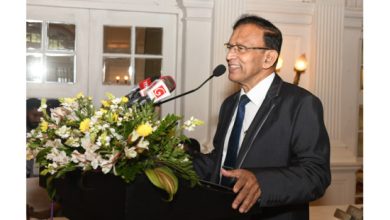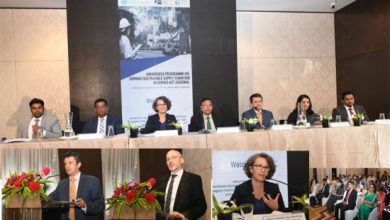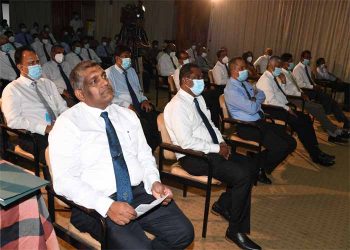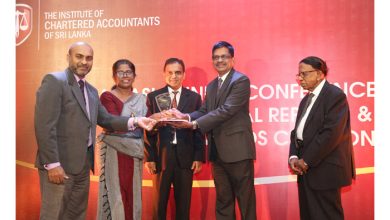The new Gateway to Colombo to be inaugurated symbolizing the strength of friendship between Sri Lanka and Japan
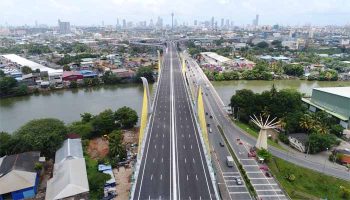
The inauguration of new bridge across Kelani River at Peliyagoda is scheduled to be held on 24th of November 2021 with the participation of H. E. President, H. E. Prime Minister, H.E. Ambassador of Japan in Sri Lanka, Chief Representative of JICA Sri Lanka Office and many other dignitaries.
The 6-lane bridge constructed through a concessionary loan of JPY 35,020 million from Japan International Cooperation Agency (JICA) extends southwards from Colombo-Katunayake Expressway, and divides towards Port Access Road ending at Ingurukade Intersection and Baseline Road ending at Orugodawatte Intersection.
The bridge was constructed with advanced technology from Japan culminating in several milestones in transport technology in Sri Lanka. The bridge itself consists of two sections – the extradosed bridge section over the river, and the steel box girder viaduct section over the existing roadway. Both technologies are used for the first time in Sri Lanka. The extradosed design enabled the bridge to have the widest span without piers in any bridge in Sri Lanka. As no piers needed to be constructed on the river bed, there is no impact to the water flow or ecology of the river itself. The steel box girder technology enabled the viaduct section to be constructed with narrower curves to optimize space, and quicker construction to optimize resources with minimum disruption to traffic.
The Japanese contractors and consultants employed Sri Lankan professionals as well as skilled labor as much as possible. One of the contractors was a joint venture between Japanese and Sri Lankan companies. In addition to the direct technical transfer through employment, the Japanese companies conducted training programmes for the professionals from the implementing agency Road Development Authority (RDA) to transfer technology for long term sustainability.
The buildings of the Atomic Energy Agency, and Automobile Engineering Training Institute located in the vicinity had to be relocated to make way for the new bridge. New and better buildings were constructed for both agencies through loan proceeds.
Approximately 320 low-income households were located in the site earmarked for the Project as well. These households suffered much hardship every year due to inundation when the water level of the Kelani river rises. All the project affected families received new homes with all amenities at UDA’s Lak Sanda Sevana apartment complex at Salamulla. The resettlement was conducted by the Ministry of Highways and Road Development Authority in accordance with JICA’s environmental and social safeguard process with the vision of enabling a better life for the project affected people.
Although constructed at high elevation, and over critical national roadways with high traffic volume, the Project could be completed without any serious accidents.
The loan from JICA was provided under Special Terms of Economic Partnership (STEP), at interest rates of 0.1% p.a. and 0.01% p.a. for Civil Works and Consultancy Services respectively, with 40 years repayment period including 10 years of grace period. The Ministry of Highways and Road Development Authority are the executing and implementing agencies respectively for the Project.
“This bridge encompasses all the elements we strive for in a Project financed by JICA – improving the conditions of the environment and project affected people, technology transfer of Japan’s high quality infrastructure, gender inclusivity in the work place, special consideration for site safety and very importantly strengthening the bonds of friendship and collaboration between Sri Lanka and Japan”, says Mr. YAMADA Tetsuya, Chief Representative of JICA Sri Lanka Office.


